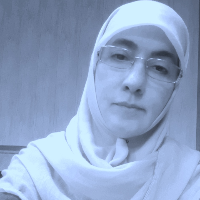Quality of Arabesque Motif in the Borders of the Rugs of the Tenth Century AH
Author(s):
Article Type:
Research/Original Article (دارای رتبه معتبر)
Abstract:
With the beginning of Safavid rule from the tenth century AH, the innovative creation of rugs with a different structure (design and weave) from the past took place in the first hundred years. Rugs in all original samples have a specific structure based on context and border. Borders are the most stable and regular rug spaces; consisting of repeating decorative qualities due to their spatial restrictions. Arabesques are one of the most frequent motifs in Safavid regional rugs and their borders. The samples searchable in this study, based on the existing identity and related to the rugs of the tenth century, belong to the six regions of Tabriz, Garabag, Bakhshayesh, Kashan, Kerman and Herat. It is obvious that the strong history of these areas in the field of culture, politics and art has turned them into centers for the production of works of art such as exquisite Safavid rugs.It is necessary to identify and present the most effective motifs and decorative patterns inspired by them in the borders of old urban rugs with a focus on products from different regions of Safavid Iran to be able to push the current traditional design towards the use of the artistic treasures of the past and to strengthen the design of current products based on the promotion of traditional and indigenous principles of the regions. Receiving stable decorative examples in the Iranian original traditional design and how artists use them in different spaces of works of art (case study of rugs’ border) are the main purpose of this article and answer the following two questions;1-How is the arabesque motif in the borders of 10th century AH rugs from the point of view of traditional carpet design in terms of types, decorative structures and placement?2-What is the distinguishing feature of the use of arabesque motif in the rugs’ border of the (quintet) weaving areas of the tenth century AH?In this paper, the research method is comparative analysis and data collection based on library and internet information (Metropolitan Museum Portal, V&A Museum Portal and MFA Museum Portal). It is also a tool for collecting information, studying, observing and preparing linear images of samples in the mentioned sources. In the first hundred years of Safavid rule, carpet weaving had a considerable growth in quantity and quality. Based on this, the rugs of the tenth century AH have been selected as the statistical population of this study due to their high diversity and local weave of which, 22 samples with the focus on the existence of arabesque in their decorative patterns were studied. Also the borders of studied samples should be free of damage and accordingly, sampling in the present paper has been done in a non-random way to achieve representativeness or comparability. In this method, the researcher seeks to reach a sample that represents a wider group of samples. The method of data analysis is qualitative with a structural content analysis approach. In this way, the authors categorized the three qualities based on arabesque usage in the border of the rugs based on the linear images extracted from the samples to be able to describe the distinctive features of the motif in productions of different regions.By analysis of 22 samples of the 10th century AH rugs from six rug weaving regions of Iran, with the focus on arabesque application in the border, the questions of the article were answered. In answer to the first question, by analyzing the linear images of the borders, the five types of arabesque are simple, floral, cloud band and dragon mouth, and six decorative systems including Sainak (Ghalamdani), reciprocating, floral arabesque, meander arabesque band, arabesque frame or symmetrical combinations, free cloudy arabesque and their application in three separate parts, main and sub-border, main border and sub-border were registered. In answer to the second question, most of the applications of arabesque motif and its types belonged to Tabriz and Herat rugs and in terms of decorations compression, the Tabriz, Herat and Garabag rugs were in the forefront. Examples of Tabriz and Herat were distinguished by the benefit of a variety of decorative structures. Also in Tabriz, Garabag and Kashan rugs, arabesque had been used in all three border areas. Therefore, the borders of Tabriz and Herat rugs were in the forefront in benefiting from the three qualities of arabesque motif.
Keywords:
Language:
Persian
Published:
Negareh journal, Volume:18 Issue: 66, 2023
Pages:
181 to 195
magiran.com/p2593091
دانلود و مطالعه متن این مقاله با یکی از روشهای زیر امکان پذیر است:
اشتراک شخصی
با عضویت و پرداخت آنلاین حق اشتراک یکساله به مبلغ 1,390,000ريال میتوانید 70 عنوان مطلب دانلود کنید!
اشتراک سازمانی
به کتابخانه دانشگاه یا محل کار خود پیشنهاد کنید تا اشتراک سازمانی این پایگاه را برای دسترسی نامحدود همه کاربران به متن مطالب تهیه نمایند!
توجه!
- حق عضویت دریافتی صرف حمایت از نشریات عضو و نگهداری، تکمیل و توسعه مگیران میشود.
- پرداخت حق اشتراک و دانلود مقالات اجازه بازنشر آن در سایر رسانههای چاپی و دیجیتال را به کاربر نمیدهد.
In order to view content subscription is required
Personal subscription
Subscribe magiran.com for 70 € euros via PayPal and download 70 articles during a year.
Organization subscription
Please contact us to subscribe your university or library for unlimited access!



